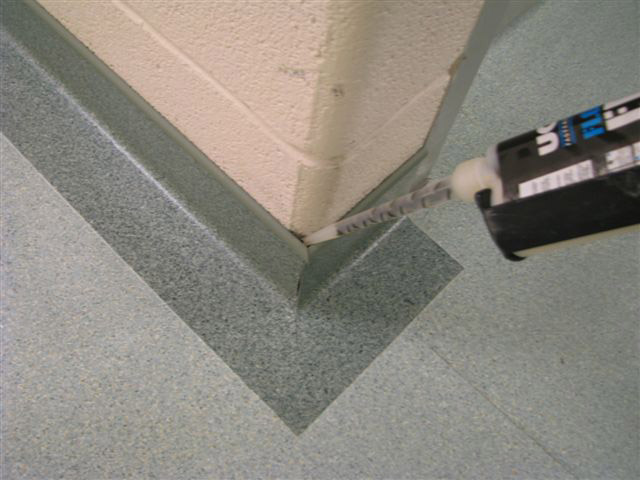Installing Cove Base Around Corners
Cove base is typically installed around the base of a room to soften the transition between a tile or resilient floor and the wall and to eliminate an unsightly seam. This type of feature, though structurally unimportant in a house, can have a major impact on the appearance of a room and a property's appeal to potential buyers. Vinyl cove base, also known as vinyl molding, is widely used in commercial and residential applications for its durability, affordability and relatively easy installation. Proper installation is required to ensure that the vinyl molding will remain attached to the wall as desired for an extended period of time while seamlessly fitting in with the design of the room. 4 Cut or score and bend the vinyl molding to accommodate corners. When making cuts or scores, set the vinyl molding on top of backerboard or a similar material to protect the underlying surface. To fit the molding tightly against inside corners, lightly score the back of the molding with a utility knife and cut a notch at the base of the molding along the score line.
To fit the molding around an outside corner, heat the area of molding with a hair dryer until it becomes extra pliable, then bend the molding to expose its backside and use the utility knife to carefully shave a thin layer off of the backside of the molding so it can bend around the corner.

Putting up coving. A DIY guide to planning and fitting coving including cutting coving mitre joints for internal and external corners, and fixing coving using coving.

Brocade Silkworm Firmware Download. Cove base tile (Image 1) goes around the base of the room. It is a common tile used in your classic Art Deco style bathrooms. It makes the floor easy to clean. You need to finish any painting before you install the cove base tile. It is recommended that you prime the walls first and then apply a semi-gloss finish in the bathroom to withstand the high humidity. It is easier to 'butter' the mastic on each tile (Image 2) rather than put it directly on the wall.
Use the v-notched trowel to get good grooves in the mastic. Wiggling the tiles into place on the wall will help create a suction to help hold the tile in place. Note: You can butter a couple of tiles at one time, but don't get too far ahead of yourself. If you get mastic on the tile, wipe with a dry cloth, or it can be scraped with a razor if it has dried. The original toilet in this bathroom had no closet flange, so it had to be replaced. To correct the problem, a PVC replacement flange that is made for cast iron waste pipes was used (Image 1).
The homeowners in this project hired a contractor to install their new toilet. Once the flange is in place, it is tightened with allen screws that will compress the rubber gasket inside the waste pipe to form a tight seal. Start by driving 1-1/2' corrosion resistant screws into the subfloor to hold the flange in place (Image 2). Cement backerboard screws work great. Slowly tighten the allen screws, working your way around the flange to create an even compression. Slide two brass closet bolts into the PVC flange and then you are ready for the new toilet.